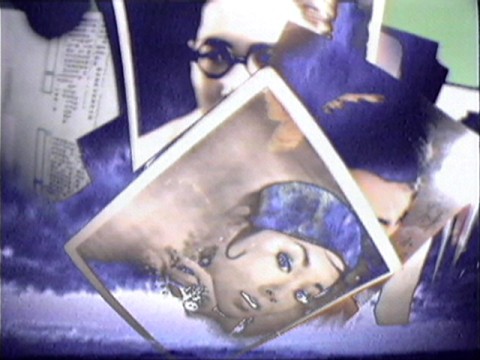Pipilotti Rist was born Elisabeth Charlotte Rist on June 21, 1962, in Grabs, Switzerland. She currently lives and works in Zurich. Rist studied commercial art, illustration, and photography at the Institute of Applied Arts in Vienna, Austria, followed by video at the School of Design in Basel, Switzerland. During the late 1980s and early 1990s, she worked as a graphic designer and was a member of the all-female, post-punk group, Les Reines Prochaines (The Future Queens), for which she created some of her earliest videos as an emerging artist. Known for stunning works that convey intense feeling via music, technology, and the female figure, her audiovisual installations have become widely exhibited. Rist's numerous solo exhibitions include those organized by Centre Pompidou, Paris; Museum of Modern Art, New York; San Francisco Museum of Modern Art; and Museo Nacional de Arte Reina Sofia, Madrid. She is also the recipient of several awards, including the Venice Biennale Premio Prize (2000) and the Joan Miró Prize (2009).
Rist's works stem from the context of her former band's recordings, as they incorporate visual and musical experimentation with feminist interrogations of desire, sexuality, and femininity. She typically features a woman, often herself, in psychedelic imagery and fairytale-like scenarios, accompanied by music that is equally manipulated. Like Pippi Longstocking, on whom Rist based her pseudonym, the works are amusing and outlandish, yet assertive. Specifically, Rist uses the body and camera in captivating, highly sensorial ways to generate a charged and entertaining experience for the viewer.
At times Rist has employed scenes of hysteria as an aggressive form of feminine resistance, wherein danger and disorder become the means for possibility and reinvention. In her video installation _Ever Is over All_ (1997) Rist juxtaposed two divergent views that center on one symbol of femininity: the flower. One screen depicts a lush field of lilies—ironically known as Red Hot Pokers—suggesting (pro)creation, while the other portrays the flower as a tool for destruction. Dressed like Dorothy from _The Wizard of Oz_, a smiling woman in a baby blue dress and ruby red heels strolls along a city sidewalk, pausing to smash the windows of parked cars with her long-stemmed flower. At some point, a female police officer passes by and nods to the woman in approval. Although Rist is absent in _Ever_, the policewoman's surprising response seems to embody her endorsement of disruptive behavior as a form of release, thereby attacking gendered conventions.
Likewise, Rist uses video technology in disruptive ways in _I’m Not the Girl Who Misses Much_ (1986). She visually and aurally abstracts a recording of herself singing John Lennon’s “Happiness is a Warm Gun" while dressed in a low-cut dress by blurring, repeating, interrupting, and speeding up and down her performance. The hysteria of this representation suggests an inability to pin down the female figure. Rist's chaotic direction thus becomes a way for her to take visual control of her body and disallow its objectification.
In many ways, these strategies appear to comment on portrayals of women in mass media and popular culture, particularly those of MTV and similar forms of entertainment. Nonetheless, Rist views her appropriations of male musicians' songs as well as her depictions of feminine agitation as less formulaic than music videos. She instead cites experimental films as major inspirations, along with the Fluxus art of Yoko Ono. Although Rist draws from popular culture, her goal is to break down the boundaries between art elitism and mass entertainment, which she believes can help viewers engage more readily with works of art.
_I’m a Victim of This Song_ (1995) also reflects a feminist agenda via popular cultural appropriation, but it does so in a singular fashion when compared to Rist's other works. The voice, rather than the body, drives the video, which features Rist softly singing Chris Isaak's pop ballad "Wicked Game" (accompanied by Andreas Guggisberg). For the duration of the song, the video intermittently cuts between a mundane café scene captured by handheld camera and a skyscape, wherein a view of moving clouds is overlapped by hazy imagery of a hand holding photographs and various indefinable objects. The passing of the clouds, the inscrutability of the imagery, and the wandering of the camera reinforce the sense of frustration and longing that the lyrics suggest. This feeling of desire soon evolves into one of alarm, as Rist's background vocals repeatedly shriek the lyrics "I don't want to fall in love!" A seeming inner voice of feminine impropriety emerges to disrupt the ballad's sense of lament and victimhood. By denying the viewer's visual and aural expectations, _I'm a Victim of This Song_ thus suggests an alternative approach to not only the song's interpretation, but also female representation. _—Kanitra Fletcher_

